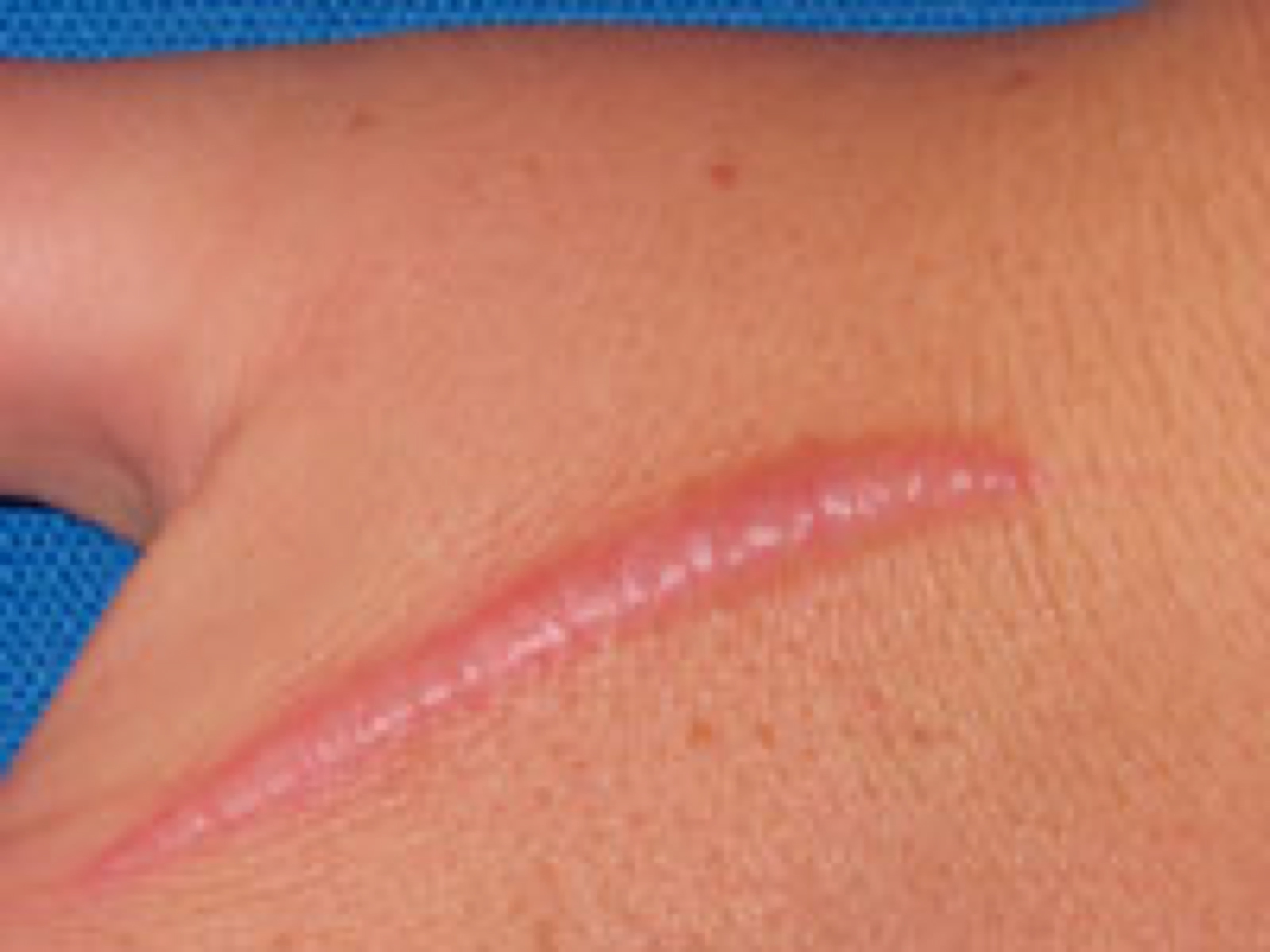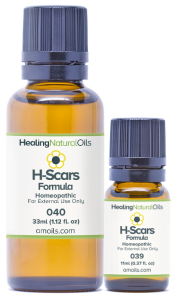Hypertrophic Scars Can Happen When Healing Process Goes Amiss

Hypertrophic scars can be caused by surgery (such as skin surgery or other restorative surgical procedures involving the skin), injections, body piercings, acne or other trauma to the skin.
A hypertrophic scar is a scar which becomes swollen, puffy and reddened, causing it to stand out from the surrounding skin. It can be very noticeable and very embarrassing while the psychological impact of scars can be deeply distressing, particularly those on the face, neck, chest, arm or hand.
Hypertrophic scars are sometimes confused with another type of scar called keloid
Although both similar in shape and size, a keloid scar will grow beyond the boundary of the wound or affected area while a hypertrophic scar will stay within the confines of the injury.
Hypertrophic scars form when something goes wrong with the initial healing process, and along with the presence of foreign material, an infection, hematoma or increased skin tension in the affected area, the culprits can be poor surgical techniques, genetic predisposition or the location of the wound.
Scars above moving joints are the most problematic
An hypertrophic scar formation is the body's response to trauma, inflammation, surgery or burns, and can even occur spontaneously. More common in young people and those with a darker skin, some will have a genetic tendency for this type of scarring.
If you have suffered from hypertrophic scars in the past, you should make sure you inform your medical team before undergoing surgery. They may suggest using pressure dressings on injuries (but these can cause other damage) or pressure pads (if a scar is removed surgically) to prevent a recurrence.
Hypertrophic scars are common after all types of operations and even cosmetic procedures
Especially if these are not properly managed.
Hypertrophic scars are more common on the breastbone, the ears and the shoulders but can appear on any part of the body. Hypertrophic scars do not carry on growing and spreading. Once the scar covers the wound, it will remain the same size for the time being. When you suffer an injury, the material inside the scar is collagen which is generated by the body to heal the injury beneath.
Hypertrophic scars have a firm feel and can even be rather sensitive to outside influences like changes in temperature or the texture of other material that is in contact like clothing. Although the scars do have blood vessels, they lack the oil glands and elastic tissue that normally protect the skin against irritation and this is why these scars can be painful or itchy.
If hypertrophic scars cover wide areas of skin (for example because of very large wounds or burns) movement can be seriously affected too.
Hypertrophic scars can partially heal themselves
Over a 12 to 18 month period, they can decrease in size, swelling and pain so that they shrink considerably and also lighten in color making them less visible but they will not disappear completely - there is usually a white scar of collagen as a permanent reminder.
How can you help the healing?
External treatments can be helpful in completing the healing process. When treating a hypertrophic scar, a doctor will usually try a conservative approach first. This could be steroid injections to shrink the scar or a recommendation for a natural remedy applied topically to reduce the size of the scar.
Surgery or laser treatment are other measures which can be used to remove the scar or to shrink it. In very recent years, a drug called Juvista went through trials. It sounded hopeful and was made from a naturally occurring human protein known as a transforming growth factor. It was to work by reducing dramatically the risk of scarring when injected into the margins of the wound after surgery, helping the skin weave back naturally. Unfortunately, the trials were eventually abandoned after the product did not live up to expectations.
Our own H-Scars Formula is a 100% natural solution for scars, reducing their appearance and promoting healthy skin and favorable scar tissue.

Sources
Henry Ford Health System. (2015). Study: Gene may open door for improved keloid, scar treatment. sciencedaily.com/releases/2015/01/150123081319.html.(Accessed, Feb 15, 2021).
Juckett G, et al. (2009). Management of keloids and hypertrophic scars.
aafp.org/afp/2009/0801/p253.html.(Accessed, Feb 15, 2021).
Keloids and hypertrophic scars. (n.d.).aocd.org/?page=KeloidsAndHypertroph. (Accessed, Feb 15, 2021).
Robles D, et al. (2007). Keloids: Pathophysiology and management.
escholarship.org/uc/item/2m43548r. (Accessed, Feb 15, 2021).




